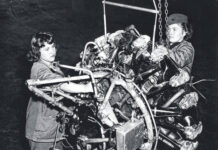As summer draws to a close, many will be heading back to school. Reading will inevitably play a large part and sometimes with the volume of schoolwork, it’s easy to overlook fiction. But fiction has inspired our world in some miraculous ways.
Millions of people around the world watched Tom Cruise in “War of the Worlds,” a remake of a 1953 film of the same name. Both were based on H.G. Wells’ book, which was originally published in 1898. One young boy named Robert Goddard, inspired by the tale of spaceships, invented the world’s first liquid-fueled rocket, which eventually led to the space program. The NASA Goddard Space Flight Center named after him now oversees the United States’ largest organization of rocket scientists and space engineers.
In a twist, the “Star Trek” novels were inspired by the original television series of the same name. The writers envisioned gadgets like the Communicator, a type of telephone that could operate without lines. If this sounds familiar, it’s because the Communicator eventually inspired Martin Cooper, an inventor and then director of Research and Development at Motorola, the company that invented the first mobile phone. “Star Trek” also inspired Steve Perlman, who invented Apple’s QuickTime after watching an episode in which a character was listening to music on his computer. “Star Trek: The Next Generation” introduced an “electronic clipboard” with a smooth, flat surface known as a Personal Access Display Device, or PADD. Sound familiar? It inspired the design of the iPad.
Science fiction author Jules Verne inspired many inventions. Simon Lake built the first submarine to successfully operate in the ocean, 28 years after he was inspired by reading “Twenty Thousand Leagues under the Sea,” featuring a fictional underwater craft called the Nautilus. Another inventor, Igor Sikorsky, was also inspired by Jules Verne and his book, “Clipper of the Clouds.” Sikorsky invented many of the world’s most well-known helicopters.
Modern mechanical arms that appear so much like real human limbs are known as “Waldos” after a character in Robert Heinlein’s short story, “Waldo.” In that story, an inventor named Waldo F. Jones requires an artificial limb, so he builds a mechanical hand for himself, inspiring a generation of inventors and scientists to experiment with mechanical limbs that more closely replicate real human limbs.
If you’ve ever wondered where the term “TASER” originated, it was named after “Thomas A. Swift’s Electric Rifle.” Tom Swift was a fictional teenage inventor in a series of children’s books now published by Simon & Schuster. More than 100 books have been written in the series by a variety of ghostwriters. Jack Cover, the inventor of the TASER, was a huge fan of the books as a young boy. Steve Wozniak, who co-founded Apple, invented the Apple I and co-invented the Apple II, was also a huge fan and says the books inspired him to become an inventor.
So never believe that you’re wasting time when you’re reading fiction. As Jules Verne often said, “Anything that one man can imagine another man can make real.” You never know which book will inspire the next great invention.








